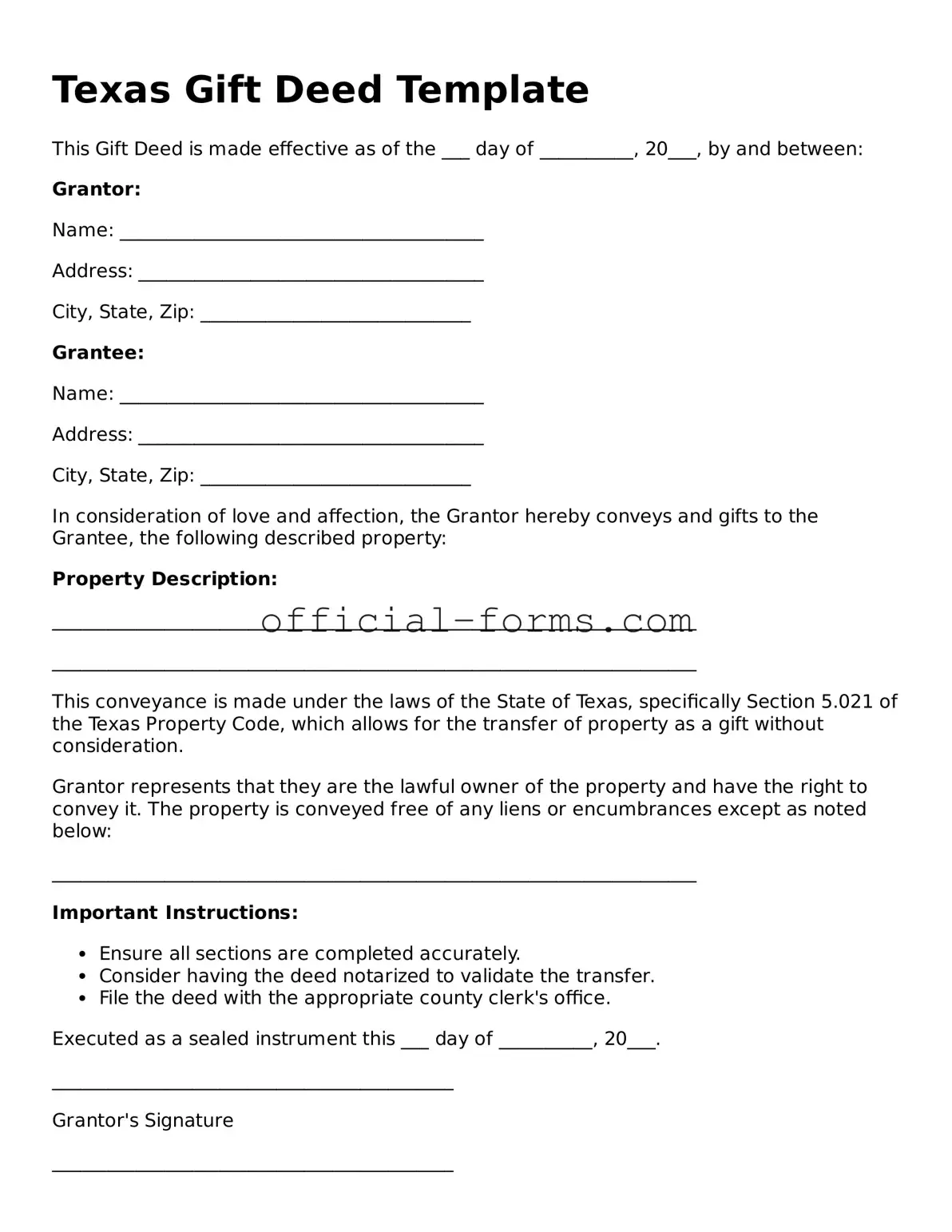When filling out the Texas Gift Deed form, many individuals inadvertently make common mistakes that can lead to complications down the line. One of the most frequent errors is failing to include the correct legal description of the property being gifted. It's not enough to simply provide the address; the legal description must be precise and often includes details like lot numbers or subdivision names. Missing or inaccurate descriptions can cause confusion and may invalidate the deed.
Another mistake is neglecting to include the names of both the donor and the recipient. It’s essential to ensure that the names are spelled correctly and match the names on any official identification. Even minor discrepancies can lead to issues with the transfer of ownership. Additionally, some people forget to provide the recipient's address, which is also a crucial piece of information for the deed.
Many individuals overlook the need for signatures. Both the donor and the recipient must sign the Gift Deed form. In some cases, the donor may assume that their signature alone is sufficient, but this is not the case. Without the recipient's signature, the deed may not be legally binding. Furthermore, it's important to have the signatures notarized to add an extra layer of authenticity to the document.
Another common error is failing to date the document. A date is necessary to establish when the gift was made. If the deed is ever questioned, having a clear date can help clarify the timeline of the property transfer. Some people might think that dating is optional, but it is indeed a critical component of the Gift Deed.
Inaccurate information regarding the property’s current owner is also a frequent oversight. The donor must be the rightful owner of the property they intend to gift. If the donor is not the legal owner, the deed will not hold up in court. Double-checking ownership records can prevent future disputes and complications.
Another mistake people make is not considering tax implications. While gifting property may seem straightforward, it can have tax consequences for both the donor and the recipient. Some individuals fail to consult with a tax professional to understand any potential gift tax liabilities, which can lead to unexpected financial burdens later.
Some individuals may also neglect to record the Gift Deed with the county clerk’s office. Failing to do so can result in the deed not being recognized publicly, which can create problems if the recipient ever needs to prove ownership. Recording the deed is a crucial step in ensuring that the gift is legally recognized.
Lastly, individuals often rush through the process, leading to careless mistakes. Taking the time to carefully review the form before submission can help catch errors that might otherwise go unnoticed. A thorough review can save time and prevent the need for corrections or re-filing later.
